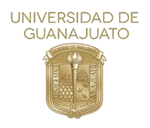
Guanajuato, Gto., September 17, 2019.- For two years, the Division of Natural and Exact Sciences (DCNE) has opened its doors to high school students in Guanajuato, who have had the opportunity to participate in projects focused on protecting the environment by applying their Chemistry, while strengthening ties with students at the top level.
At the Environmental Electrochemistry Laboratory students and professors work on proposals as diverse as alternate energy sources, including biodiesel manufacturing, aquaponics systems, fuel cells or effluent treatment contaminated with chromium.
Sofia del Pilar Cap González, a student at the University of San Carlos in Guatemala, completed a Summer Research stay at the UG as a participant in a biodiesel synthesis project, a fuel made from vegetable and animal oil residues.
Nallely Nava Pérez, a fifth semester student of the bachelor's degree in Pharmaceutical Chemistry Biologist at DCNE, has collaborated in this project for more than two years. Due to the progress made, this work has obtained funding through UG research calls.
To develop it they use cooking residue oils, which go through a previous purification process prior to biodiesel synthesis. This takes advantage of the waste of restaurants and canteens, details Dr. Guillermo Manuel González Guerra, professor of the UG and consultant of the project.
The academic explained that two years ago he started a social service project called "The Corner of Science", which links high school students with college students, this in order to promote research and knowledge dissemination.
Thus, UG students go to elementary, secondary and high school, to give talks and do experiments with students. But they also engage in projects that encourage them to do science and have an impact on the environment.
"The projects have had such an impact that the opportunity to present the progress at national and international congresses has been provided, in addition to the development of scientific articles to be published in high-impact journals," said Dr. Guillermo González.
As a result of this collaboration between the High School College, with the support of the Psych. Juana Silvina Galván Rocha, Director of ENMS Gto, and the DCNE Laboratory of Environmental Electrochemistry, have developed proposals that have been awarded in events such as "ExpoCiencias".
Such is the case of Darla Denisse Castillo Suárez, newly graduated from the ENMS Guanajuato, who won a bronze medal for the "Design and manufacture of an ecological irrigation system", which is focused on water saving.
The prototype was built with renewable materials, works by gravity and features micro sprinklers.
In addition, together with students such as Elizabeth Tovar Campos, a fifth semester student of the QFB degree at DCNE, the Electrochemistry Laboratory develops an aquaponics system, through which the water from fish tanks is reused for plant irrigation. This project is intended to be applied in communities where there is no longer fertile soil, as fish waste is transformed into nutrients.
One of the most far-reaching proposals is the development of fuel cells, i.e. devices that work to obtain energy through chemical reactions.
"With the emerging concern about the overuse of fossil fuels, this is going to be a very important alternative in some years," says Dr. González Guerra, who revealed that this is a technology already used in first world countries.
In the UG these cells are developed in collaboration with Dr. Abel Hernández, of the Engineering Division of the Irapuato-Salamanca Campus (DICIS). "They design the structural part of the cell and we design the materials that allow that chemical reaction," he explained.
He detailed that these devices are operated by a chemical reaction between hydrogen and oxygen, which generate a flow of electrons and then convert it into electrical energy, which can be used in homes or vehicles. This research is carried out by the fifth semester student in the bachelor's degree at QFB at DCNE, Paulina Palafox González, who is responsible of the design of the materials that allow the Chemical interaction in the fuel cell.
Dr. González mentions that a fundamental part of the realization of the projects is the linkage with research groups inside and outside the UG, such is the case of Dr. Fernando Israel Gómez Castro of the Department of Chemical Engineering, who collaborates in a way important in kinetic modelling for biodiesel synthesis; in the same way, Dr. José Antonio Mendoza Roca, academic at the Polytechnic University of Valencia, Spain, which collaborates with the manufacture of materials in fuel cells.
In the same space at DCNE, the head of the Laboratory, Dr. Alejandro Alatorre Ordaz leads the development of a comprehensive electrochemical system to reduce Chromium VI, a substance quite toxic to humans, plants and some other organisms.
"What we are looking for with this system is to make the reduction to a fewer toxic species that is trivalent chromium. To do this we use electrolysis, which consists in the use of electrons", which involves using a clean energy, which does not generate waste or pollutants, explains Francisco Patlán Alvarez, a fifth semester student of the bachelor's degree in Chemistry at DCNE.
Together with other students, including Omar Sebastián Sánchez Hernández, Karla Yuritzi Alvarez Rivera and Rosa Ariadna Rodríguez Vargas, students of Chemical Engineering, QFB and Chemistry at DCNE, have identified solutions that come from industries such as tanneries, which do not usually treat their waste.
The intention is that this system can be integrated into a photovoltaic system, i.e. using solar cells, because it is easier to get companies to implement this project to avoid environmental damage.
Photo gallery










